Syria features
//A// Compact history
The area of today's Syria has been settled for more then ten-thousand years, both at the coast and inland. Here is a summary of its history:
9000 BC Mureybet culture
3500 BC Ebla kingdom
2900 BC city Mari
2300 BC the Akkad empire (king Sargon the Great) takes over
1750 BC the Babylonean empire takes over
1330 BC Hetite kingdom takes over Assyria rules
1245 BC Assyria rules
900-600 BC part of Neo-Assyrian empire
600-550 BC Babylon rules
550-300 BC Persian Achaemenid empire rules Syria
332 BC Alexander the Great conquers Phoenicia
312-64 BC Syria under the rule of Seleucid empire.
64BC-476 AD part of the Roman empire
476-637 part of Byzantine empire
637 Syria becomes part of muslim Rashidun Caliphate
970 Aleppo in Syria client state of Byzantine empire
1098-1189 parts of Syria held by Crusader realms
1260 invasion of Mongols
1516-1918 Syria part of Ottoman empire
1918-1923 Syria independency, appointed King Faisal I as leader France control Syria
1924-1945 France control Syria
1946 Syria becomes independent country
1958 Egypt and Syria create the United Arab Republic
1961 end of UAR
1970 the Assad family rules Syria, increasingly in 'dictator style'
1979-1989 heavy involvement in Lebanese war
1990-1991 war with Iraq ("Gulf war")
2010 until today civil war, covering most of Syria
Given the 'wild' history of today's Syria, it is packed with unique features, both in the coast cities and in the inland areas. In the following map, all places with history facets are marked with "H".

Sidestep
Which is the oldest still alive city in the world? Historians decided that this is Jericho in Palestina, founded circa 9000 BC. Rank 2 is usually given to Byblos in Lebanon (founded circa 5500 BC), rank 3 is Aleppo in Syria (founded circa 4800 BC), rank 4 is Damascus in Syria (founded circa 4300 BC), rank 5 Susa in Iran, rank 6 Fayum in Egypt, rank 7 Sidon in Lebanon, rank 8 Plovdiv in Bulgaria, rank 9 Gaziantep in Turkey, rank 10 Beirut in Lebanon. Wow!
Currently the Syria pages do not yet provide the planned galleries for Aleppo, Damascus, Hama and Palmyra. Instead this text "Syria features" provides compact overview information.
//B// Damascus
This is the capital of Syria. It is a very large city, the population is 2.5 mio. Damascus is full of stunning architecture - yet also full of depressing ruins, given the obviously never ending wars of Syria.
Archeologists rate Damascus as the fourth-oldest city in the world, its first settlement is dated circa 4300 BC.
The main parts of Damascus appear as modern big city, yet there are also lots of traditional quarters (many of which were bombed down in the Lebanese war and the Gulf war).
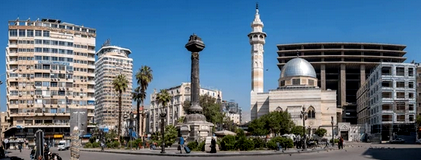

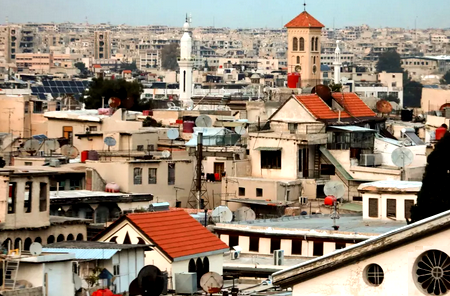
It is in the older and more traditional areas of Damascus where I noticed beautiful houses with gardens - I reckon owned by rather wealthy people.

The most famous building of Damascus is the Great Mosque, named "Umayyad Mosque". This is one of the oldest, and largest, mosques in the world.
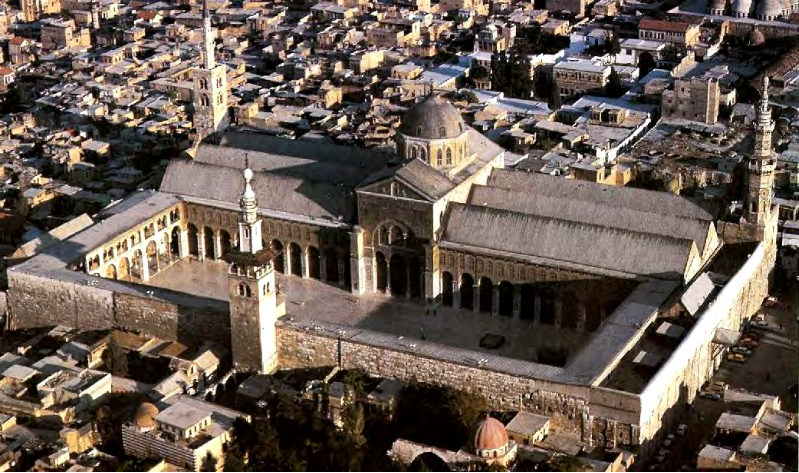
It began with the temple Hadad-Ramman, erected by the Romans after they had conquered Damascus in 64 BC, later renamed Jupiter temple. In 391, this very large temple was converted into a Christian cathedral.
In 634 Damascus was captured by Muslim Arab forces, and in 661 it became the administrative capital of the Muslim world. Then in 706 the cathedral was mostly demolished and replace by a mosque, completed in 711. In the following centuries the "Umayyad Mosque" was repeatedly extended, and its architecture modified. Later it got three minarets, 77 m high.
The sketch below shows the structure of the building.
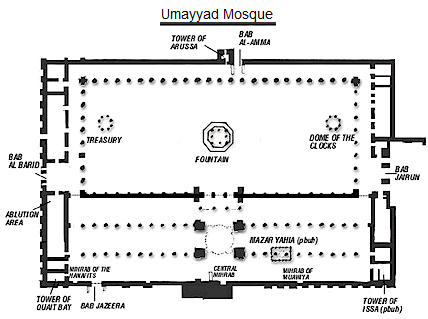
Building this mosque was a huge enterprise. Supposedly the workforce was 12000 people, with Coptic, Greek, Persian, Moroccan and Indian craftsmen.
The following pictures show core features of the mosque, including some of the mosaic sections, and the very large prayer hall.
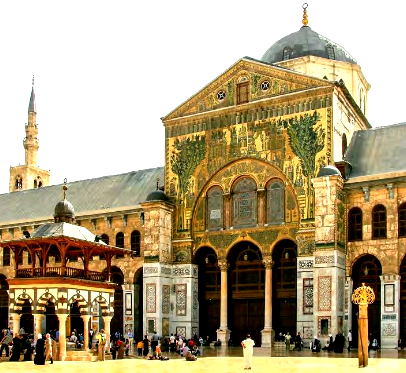
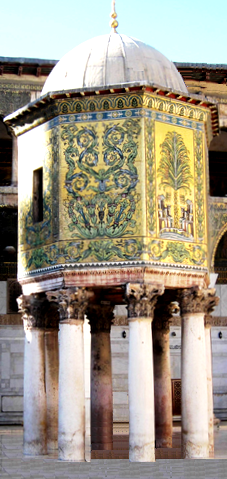
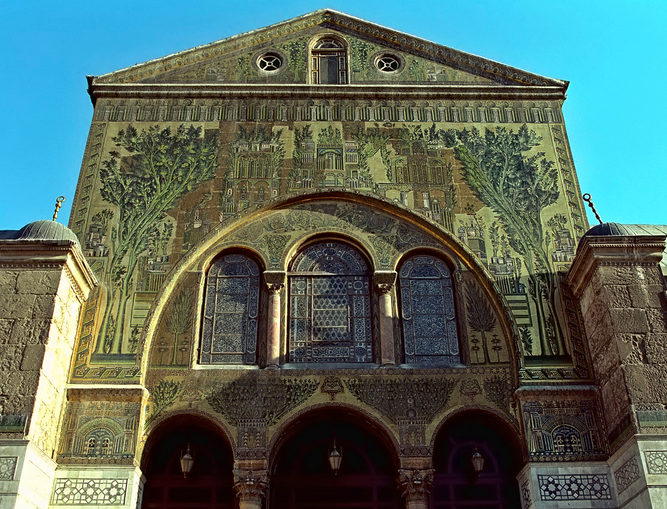

My personal summary: Yes this is the largest mosque I have ever seen. But - it's not the most beautiful one, design-wise and art-wise, for me it was, and still is, the "Blue Mosque" in Istanbul.
//C// Aleppo
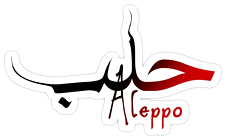
The city Aleppo, located in Syria's north, is very large and very old. Its population is 2.1 mio residents. Aleppo is a multi-cultural place - while most residents are Arabs, about 20% are Christians.
Archeologists rate Aleppo as the third-oldest city in the world, its first settlement is dated circa 4800 BC.
Visiting Aleppo meant to see its mighty castle (now a ruin which is open and can be inspected) and lots of mosques and churches.

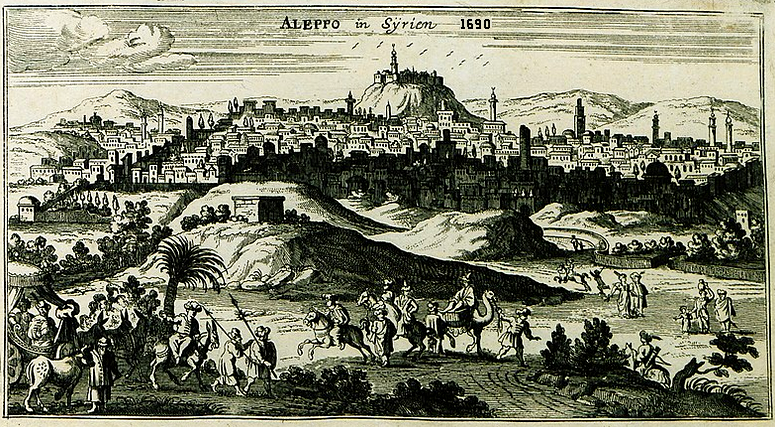
The old city of Aleppo was declared a World Heritage Site in 1986.
Below are photos of two Christian churches, the ruin of a dead one (St Simon) and a well maintained one (Maronite).
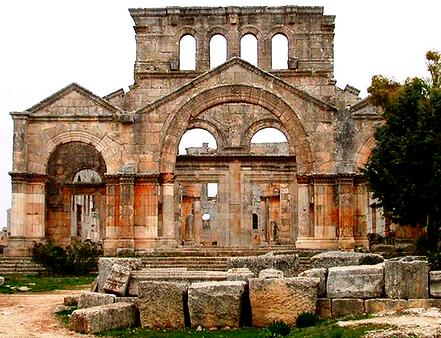
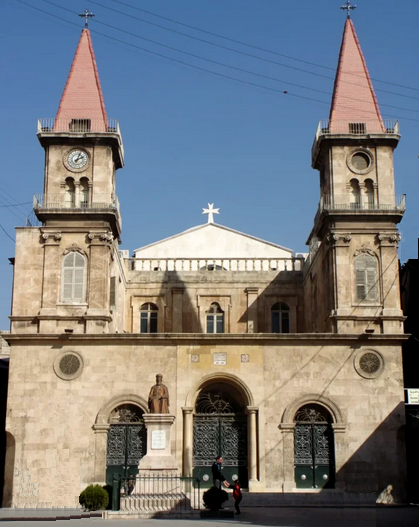
Regarding shopping - - all modern supermarkets are plentiful shops, yet the tradition are the ones in Aleppo's historical areas, and there you can still get about everything.....

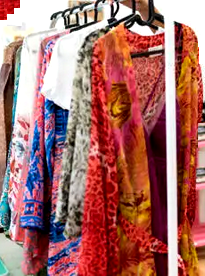
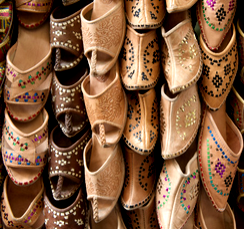
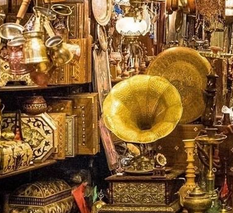
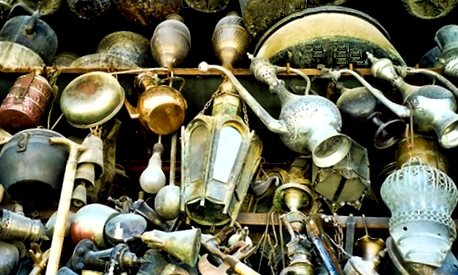
Regarding music - in all cities of Syria music is very vivid, both traditional Arabic and European music, since decades. One could even see and hear musicians in the markets. A main instrument is the oud, some kind of a Syrian lute.

Sidestep
Why is this of significant interest to me? Because: I was a musician (as young man), and because I organize regularly music events in Melbourne.
//D// Hama
This is very old city as well, located at the river Orontes in Syria's western inland. It was founded circa 1500 BC. Hama may be not as famous as Damascus or Aleppo - but in one regard it is sensational, its huge waterwheels ("norias")!
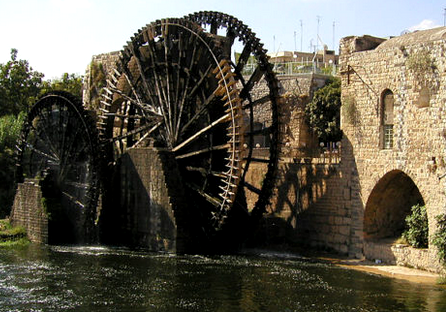
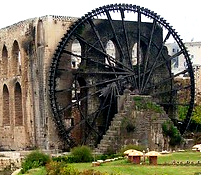
They were built with wood. 17 norias survived. The largest one has a diameter of 20 m and was established in 1453, a very impressing 'machine'. indeed..
Sidestep
Why was this exciting for me? Well, when I grew up I lived mostly in mills, because of the profession of my father. And one of these mills, in Banteln, was actually a water mill, built above a river!
//E// Palmyra
The historic township of Palmyra, now called Tadmur, is located in the middle of Syria. From about 50 to about 300 is was a mighty city, and for a while a kingdom. Most of its time linked to the Roman empire, it is/was full of stunning architectecture. In 1980, the UNESCO declared it a World Heritage Site.
For a while at about 270 Palmyra was ruled by a queen, Zenobia. The only image of her is on a mint. A painting of her was created in 1856, "Zenobia looking at her city".. At that time Palmyra had, estimated, 200000 residents.
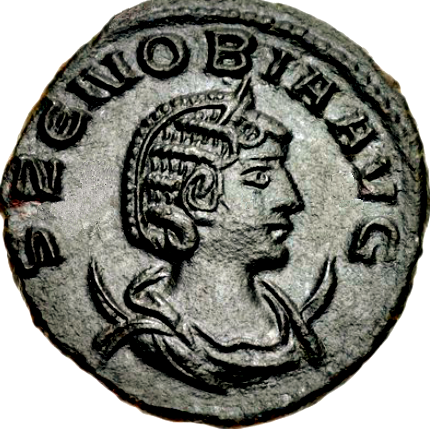
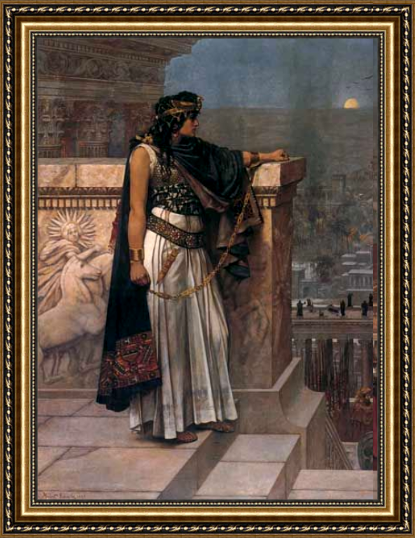
When I visited Palmyra in 1978, all ruins of this city's grand history were still there. It was in 2015, during the Syrian civil war, that troops of the so-called "Islamic State" (IS) destroyed most of the ancient city - a terrible and very cynical IS action.
Here are just a few of the buildings which I saw, mainly temples:
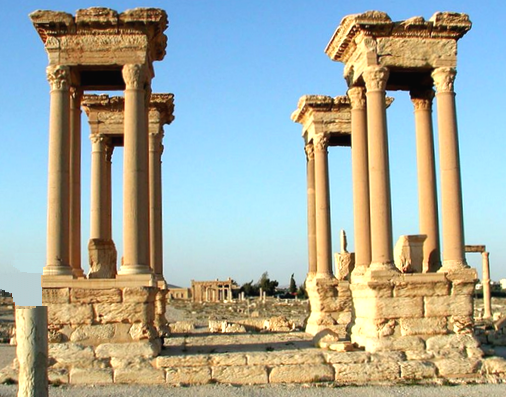
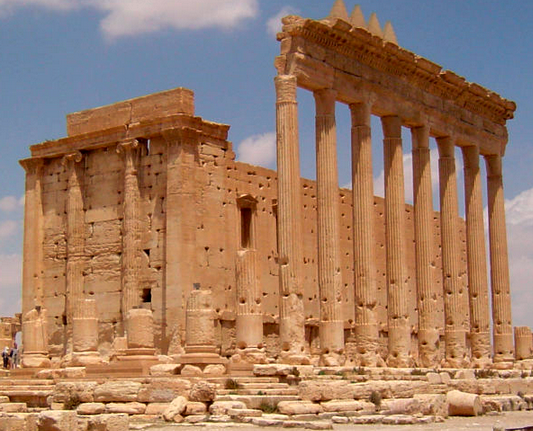
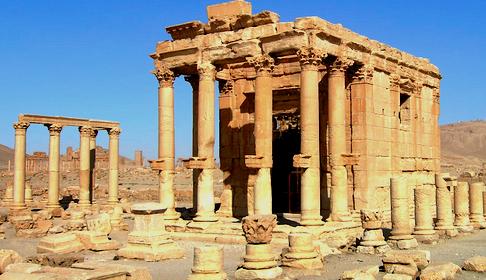
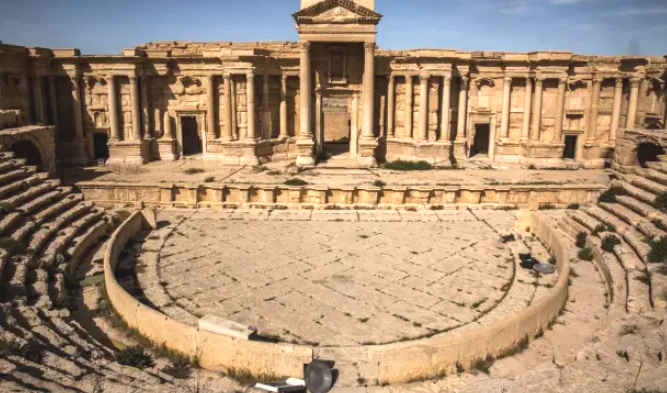
The last picture shows the huge Roman theatre, which has almost completely survived.
//F// Crusader castles
The "crusaders", soldiers mostly from the Christian countries Byzantine, England, France and Germany, tried from 1095 to 1291, in 6 crusades, to take back and then to defend the "Holy City" Jerusalem, which was since 635 part of Muslim empires, the first one was the Umayyad.
During that time mighty castles were built in coastal cities on the route to Jerusalem in today's Lebanon and Syria.
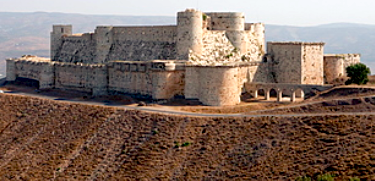
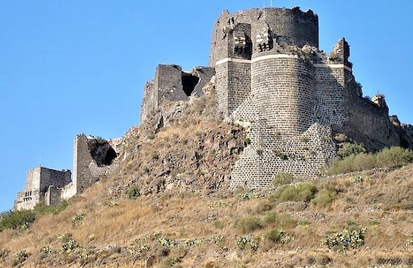
The largest one, Krak de Chevaliers, is located in Syria, as is a slightly smaller one, Margat.
//G// Shopping
As a traveler shopping is not a main agenda - yet I enjoyed looking around in traditional shops. There one can see lots of local products, and also the local people - both is indeed interesting. Plus, usually the shop owners are very competent and helpful.

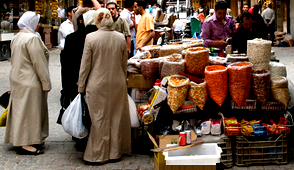
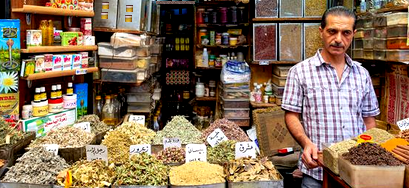
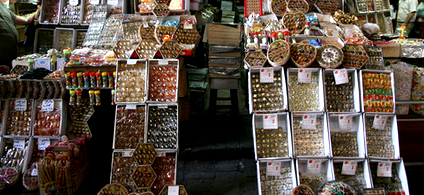
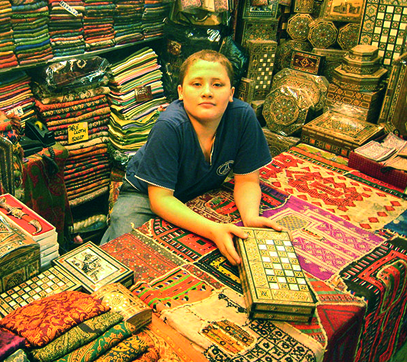

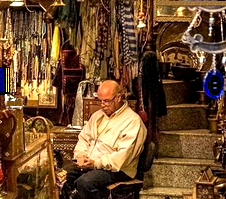
So, visiting local shops widens, beyond all the buildings, your understanding of the country you are visiting.
//H// Eating out
In Damascus eating out is very much in. I noticed any kind of cafes and bistros and restaurants, from 'super-simple' to 'high-up' for wealthy citizens.


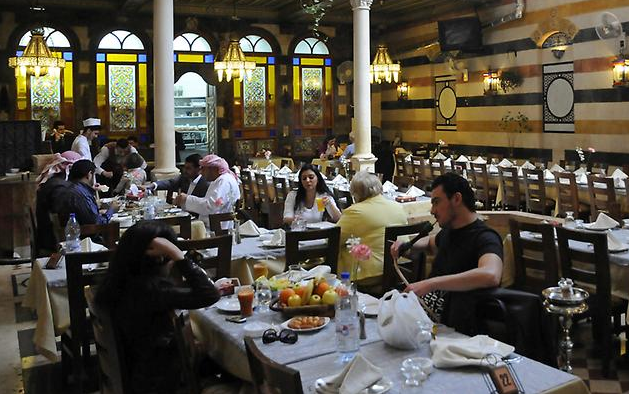
This, the third example of an eating place, is certainly an 'upper class' restaurant, and only once or so did I go there. By the way, do you notice what the customer in a black t-shirt is doing?

It is waterpipe smoking. In Damascus I saw this for the first time. And indeed, in a friendly little cafe I (the strict non-smoker) got a chance to do it myself, and - - yes I did it.......
********
As always - at the end of an essay my usual question comes up - is Syria worth a visit? Currently certainly not, it is still a 'war country'.
Yet Syria has a history of 5000 years, and it is full of truly exciting places and feats. So, if ever peace returns to this nation, go there!

